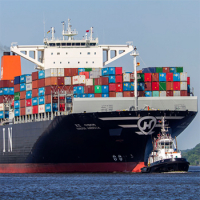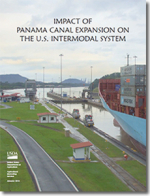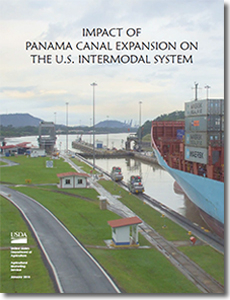Impact of Panama Canal Expansion on the U.S. Intermodal System
Understanding current trade flows and continuing changes in international trade lanes is critical to optimizing system investment and operations within our own borders
The Panama Canal expansion is expected to affect global transportation trade routes.
The Panama Canal’s main competitors for shipments from Asia to the U.S. East Coast are the U.S. Intermodal System and the Suez Canal.
The Panama Canal is an efficient route, but is reaching its maximum capacity.
However, this problem will be resolved by 2014 when the Panama Canal Expansion Project is completed. The Suez Canal route, especially, competes with the Panama Canal in the South and Southeast Asia–U.S. East Coast route due to its shorter navigation time of 21.1 days and its capacity to handle Post-Panamax vessels.
The U.S. Intermodal System has the shortest ocean navigation time (Asia to U.S. West Coast) of 12.3 days. Transit time from the West Coast to the East Coast is another 6 days, for a total transit time from Asia to the East Coast of about 18.3 days. However, the reliability of ports and railroads frequently is compromised by labor problems and capacity expansion challenges.
For the U.S. Intermodal System to remain competitive in the face of the Panama Canal expansion, further investment in U.S. infrastructure and a more integrated approach is needed to reduced bottlenecks in the system.
What’s Related


Favorites





